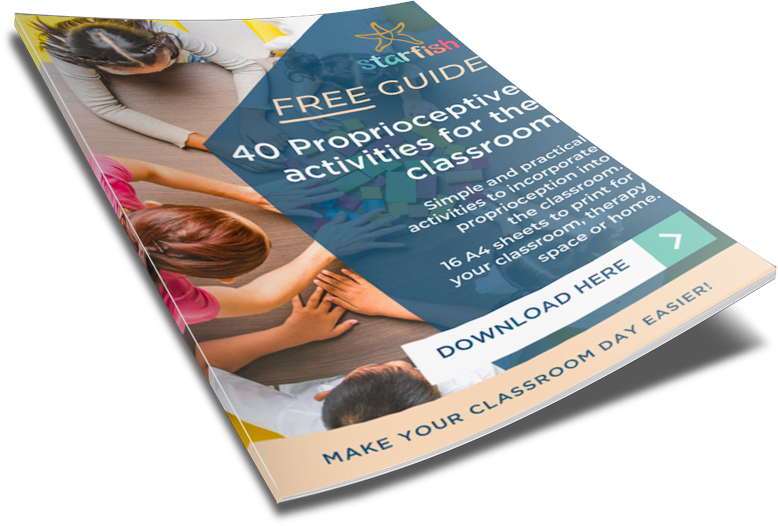Your Cart is Empty
NDIS Approved Provider | Trusted by 200+ industry professionals | 25 years of expert knowledge & Experience


In early childhood education, teaching the alphabet is a fundamental skill that lays the foundation for reading and writing. However, the order in which the letters are taught can greatly impact a child's learning progress.
In this blog, we will explore the importance of teaching the alphabet in a particular order, provide practical tips on how to effectively teach letter sounds, and suggest activities and resources that you can do now to support your child's learning journey.
And keep reading for our free download!
The alphabet letters are the code (of the print). Knowing the sounds they represent gives the key to the code.
It would seem logical to start with the letter A and steadily work your way through the alphabet to the letter Z. And, some people do successfully teach the letter names/sounds in alphabetic order.
However, there are some convincing reasons why you might consider other approaches. Here are some of them:
Many good early literacy programs begin with the letters s, a, t, p, i, n
This is because up to 18 x 3 letter words can be made with these letters, including: sat, pat, pin, pan, tap, tin, sip, sin, pit, nip, ant, tan, nap, sap, sit
Once children know these letter/sounds they can start decoding (reading) and encoding (spelling) in the very early stages of literacy learning.
Programs may differ slightly, with the recommended order for the remainder of the alphabet letters.
Some programs may introduce some of the common digraphs such as /ck/ quite early.
The NSW (Aust) Department of Education has the following sequence as part of the English syllabus:
s, a, t, p , i, n, d, m , g, o, c, k, ck, e, u, r, h, b, f, ff, l, ll, ss, z, zz, sh, ch, th (voiced: this), th (unvoiced: thin), ng, y, y, j, v, ve, w, wh, x, q, qu, i-e, a-e, o-e, e-e, u-e, oi, oy, ou, ow (cow), oa, ow (show), ai, ay, ee, ea, e (me), oo (soon), ew
To find this in a scope and sequence, search: NSW Department of Education English K-2 Instructional sequence Grapheme-Phoneme Correspondence. June 2024
Another suggested order of teaching the alphabet, referred to as The Carnine Order, was proposed by Carnine et al (2006). This order has commonly occurring letters early and deliberately separates letters that look or sound similar.
Note, this includes lower and upper case letters. We have created a FREE printable download of the Carnine order (lower case letters only). It is the same one we refer to in our specialist tutoring centre. Find the download link below.


Most children who attend our tutoring centre, are experiencing significant difficulties learning to read. Generally, they have been at school for at least a year (or more). As a result, most will already have some alphabetic knowledge.
Because of this, the first thing we do is use our Sound Ring Level 1 - Alphabet Cards (print side only) to quickly assess which of the alphabet letter sounds they already know (to automaticity) and which they are yet to master. We put them into two piles (known and unknown).
The known cards are added on to the sound ring. For more details on the process, please click below for our blog - "How Flashcards Can Improve Your Child's Phonics Skills"
We then proceed to teach the remaining alphabet letter sounds. We always start with s,a, t, p, i, n and then usually follow the Carnine order.
Generally, we add one letter/sound per session.
There are times we might vary this. For example, we might add in letters that are in a child’s name or have relevance to them (as this assists the learning process and engagement). We find this method to be extremely helpful and effective.
There are several approaches teaching the alphabet letter/sounds, but by starting with the most common and easily recognisable letters, children can quickly build skills to begin reading and spelling words from the outset.
To help support your teaching efforts, be sure to download our FREE resource and browse our extensive collection of language and literacy resources, which can provide additional tools and materials for helping young learners master the alphabet.

Kirstie and the Starfish team.
Kirstie Wishart M.Ed (Special Education).
Owner and founder of The Starfish Store. Kirstie’s professional life has included: teaching (in both public and private schools in Australia, New Zealand and Thailand), lecturer and subject coordinator at the University of Wollongong, Educational consultant (working with children and young people with a trauma background), OoHC Case Work Manager, and Specialist Tutor (working with children and young people with significant learning difficulties and/or disabilities).
Adams, Marilyn (1994) Beginning to Read: Thinking and Learning about Print
Carnine, Silbert, Kame’enui, Tarver, Jungjohann (2006) Teaching Struggling and At-Risk Readers: A Direct Instruction Approach
Commonwealth of Australia (2005) National Enquiry into Literacy
Konza (2006) Teaching Children with Reading Difficulties
NSW Government Education (2017) Effective Reading Instruction in the Early Years of School
Snow, Burns and Griffin (1998) Preventing Reading Difficulties in Young Children
Texas Education Agency (2002) https://www.readingrockets.org/teaching/reading101-course/toolbox/alphabetic-principle

40 Proprioceptive activities for the classroom. Simple and practical activities to incorporate Proprioceptive into the classroom. 16 A4 sheets to print for your classroom, therapy space or home.